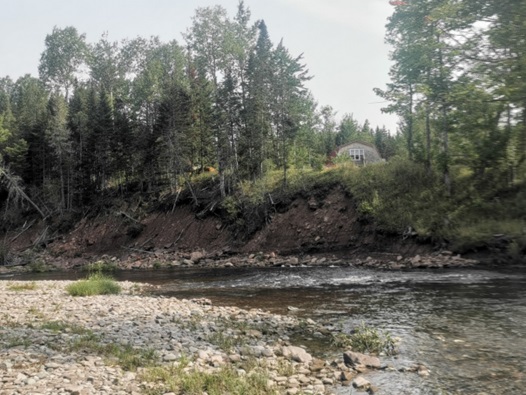Fourth Level Assessment-
Aquatic Habitat Rehabilitation Plan
Fourth Level Assessment
Summary of Issues Identified from Information on Current Impacts
Culvert surveys conducted by the Petitcodiac Watershed Alliance as part of their Broken Brooks program noted 21 culverts that were full barriers to passage and 8 culverts that were partial barriers to passage (Figure 6) within the Pollett River watershed, a total of 29 impacted culverts. The PWA reports having taken steps to remediate 8 of these culverts- 4 full barriers and 4 partial barriers, suggesting that at least 21 culverts remain which require attention. Considering that the partial barriers were blocked by woody debris which was cleared- and that this was done in 2014, some of those culverts may need to revisited.
Summary of Issues Identified from Aquatic and Riparian Habitat Assessment
Based on length – Rapid Geomorphic Assessments (RGAs) identified roughly 86% of the Pollett River as “in adjustment” indicating that instability is widespread. In less than 2% of the Pollett River’s length was Channel Stability found to be “stable”. Aggradation (raising of the riverbed through extensive sediment deposition) is the primary geomorphic process taking place within 43 % of reaches. Meanwhile it is the secondary geomorphic process in an additional 33% of reaches. That is a combined 76% of reaches in the river

Figure 18: Aggradation (gravel bar) in Reach 60 promoting widening (bank failure) within Reach 61
where aggradation is either the primary or secondary geomorphic process underway. Aggradation leads to piles of sediment in the river that re-direct flows against the banks, causing erosion and channel widening. An example of this is the situation in Figure 18 from reach 61, where the bank is failing and widening is occurring due to aggradation, as the gravel bar builds up in reach 60. Sediment put in motion from sites like this can bury salmon redds, suffocating the eggs within.
Identifying the reaches most strongly impacted allows interventions to address these issues to selected and prioritized. That is the essence of the stewardship planning process. Knowledge of instability within the river can be brought together with other factors such as the locations of spawning gravel of endangered species such as iBoF salmon to prioritize and target efforts within the river to produce the maximum conservation benefit.












